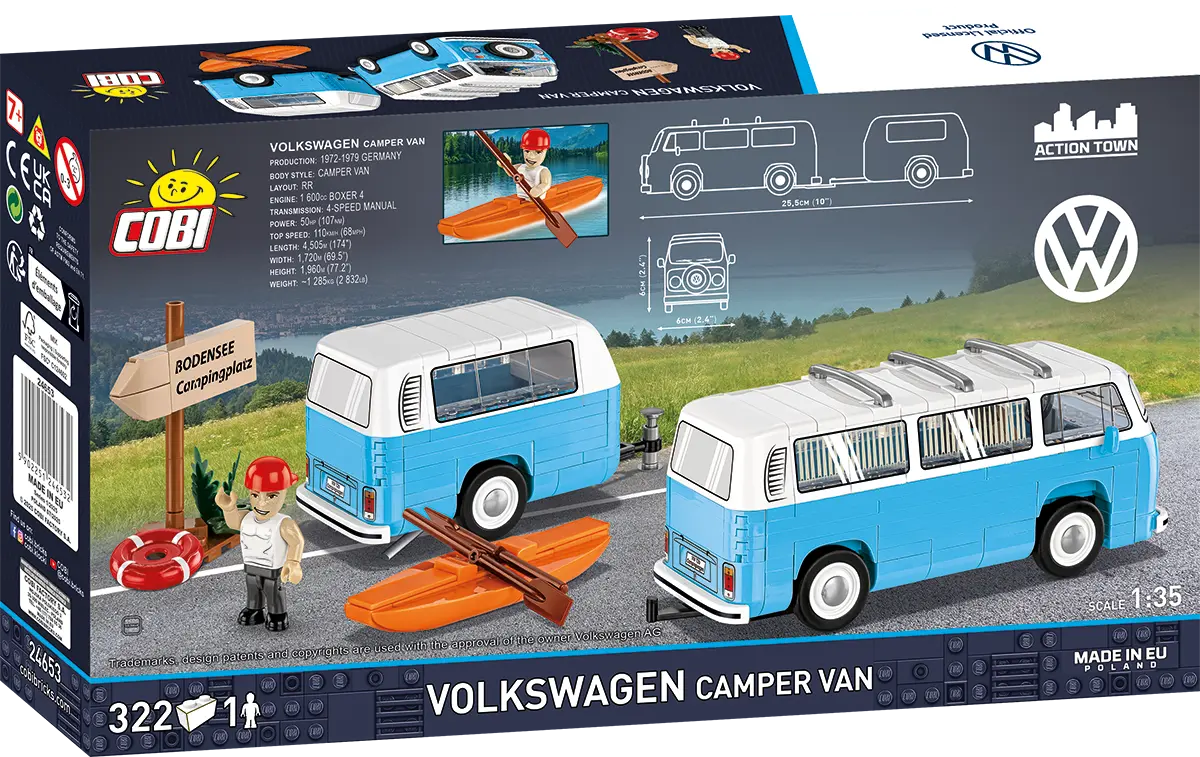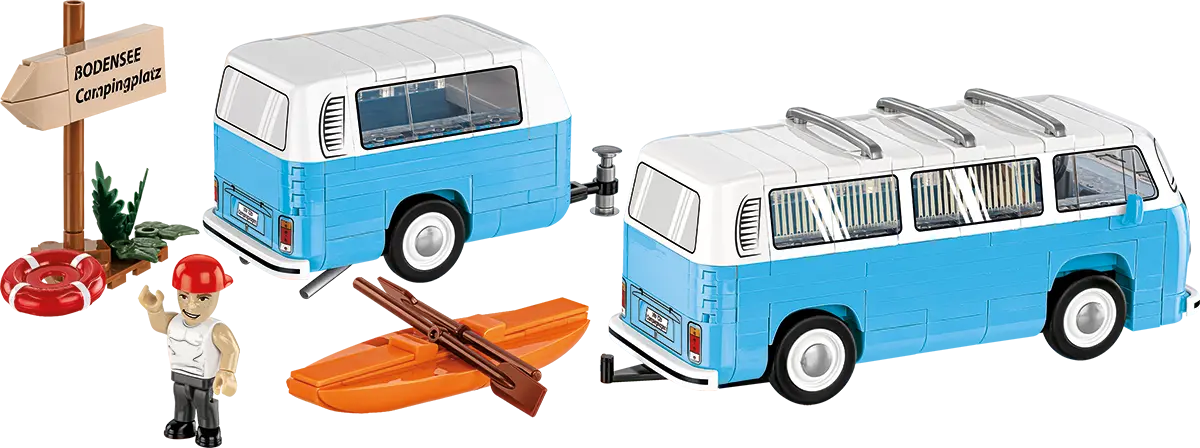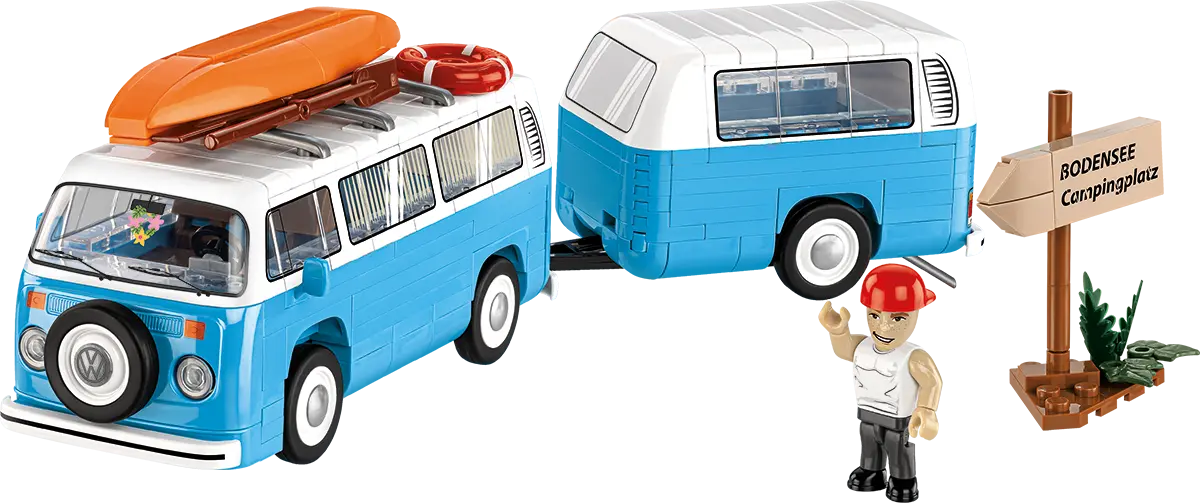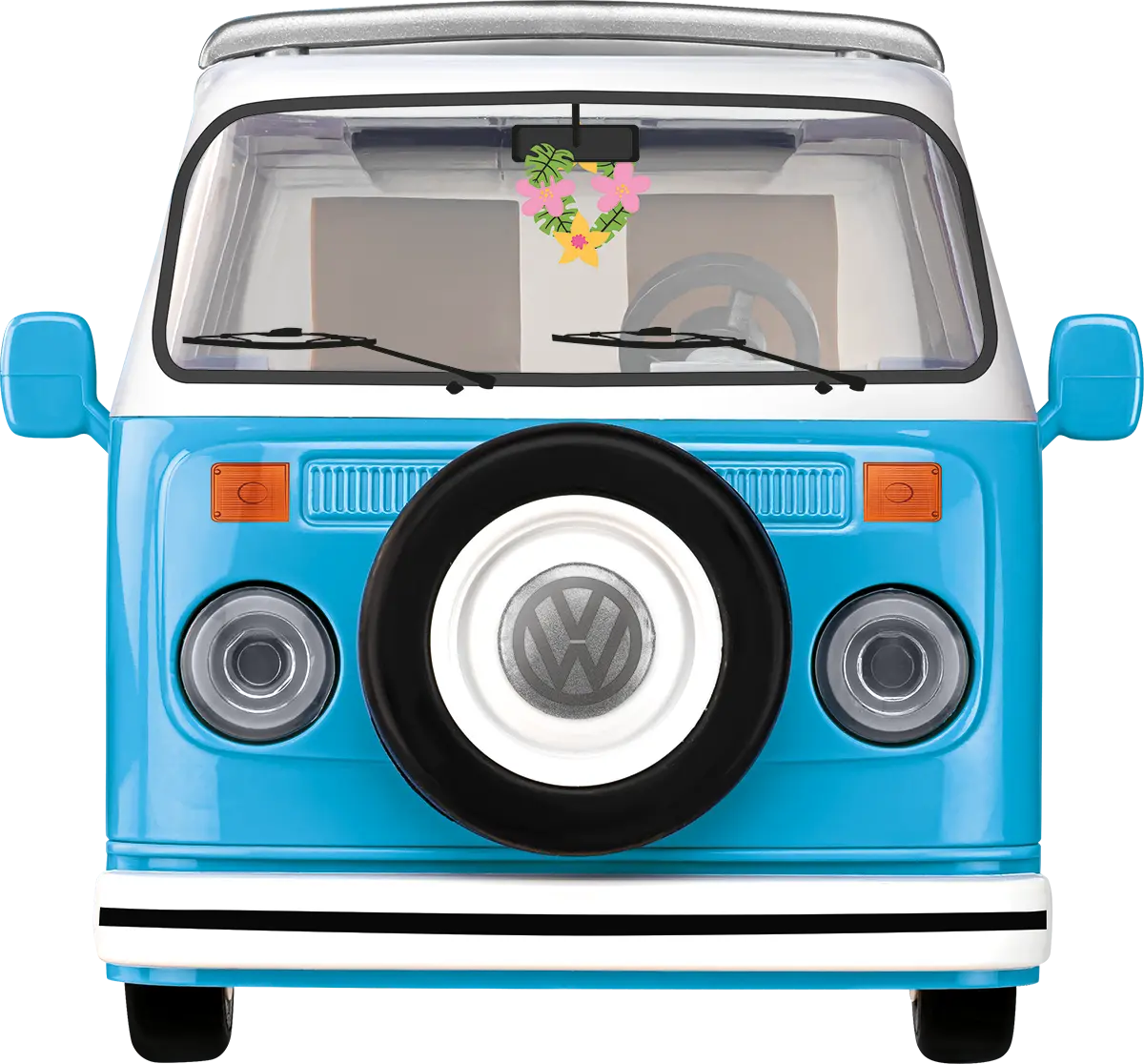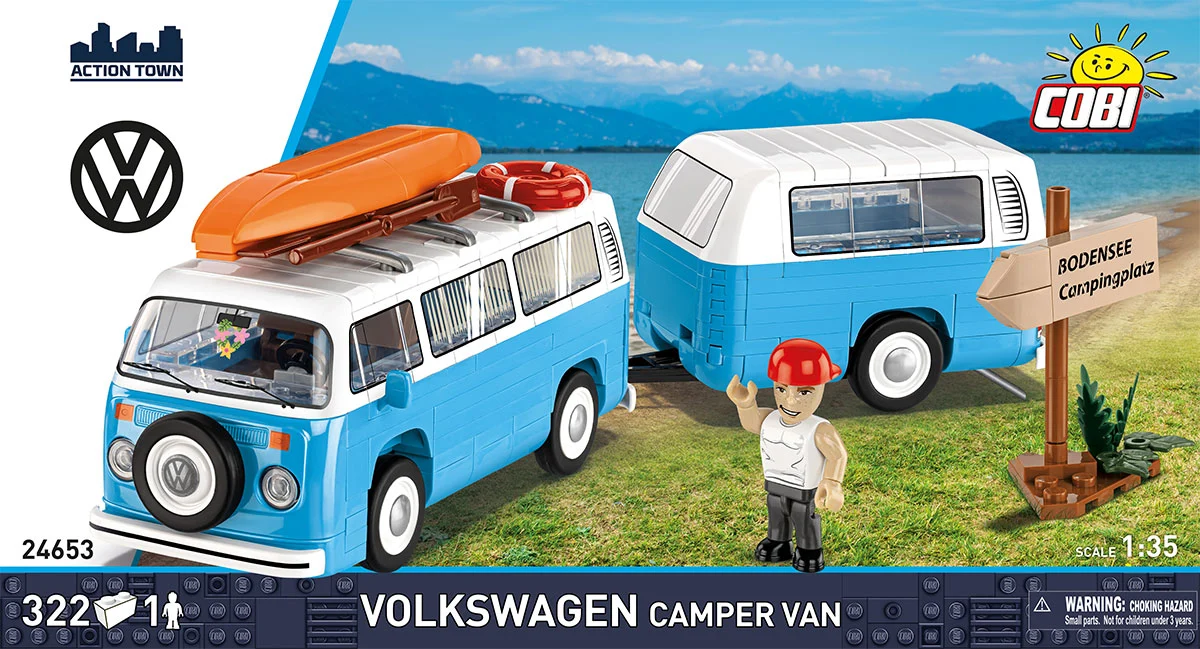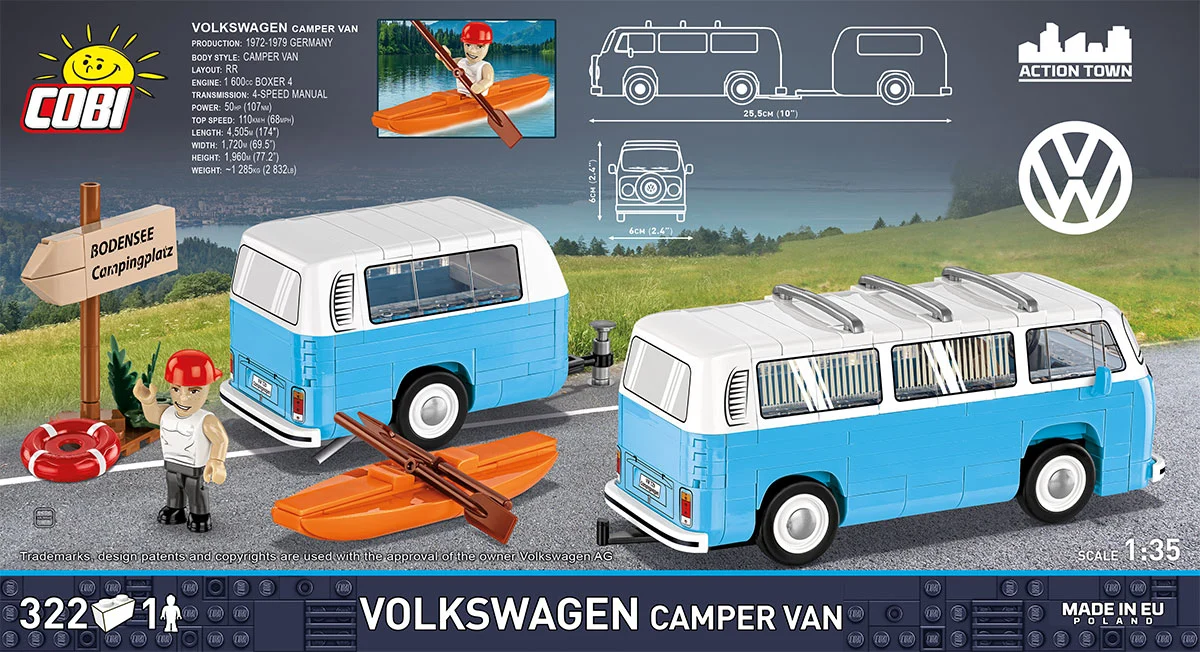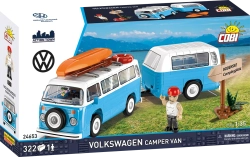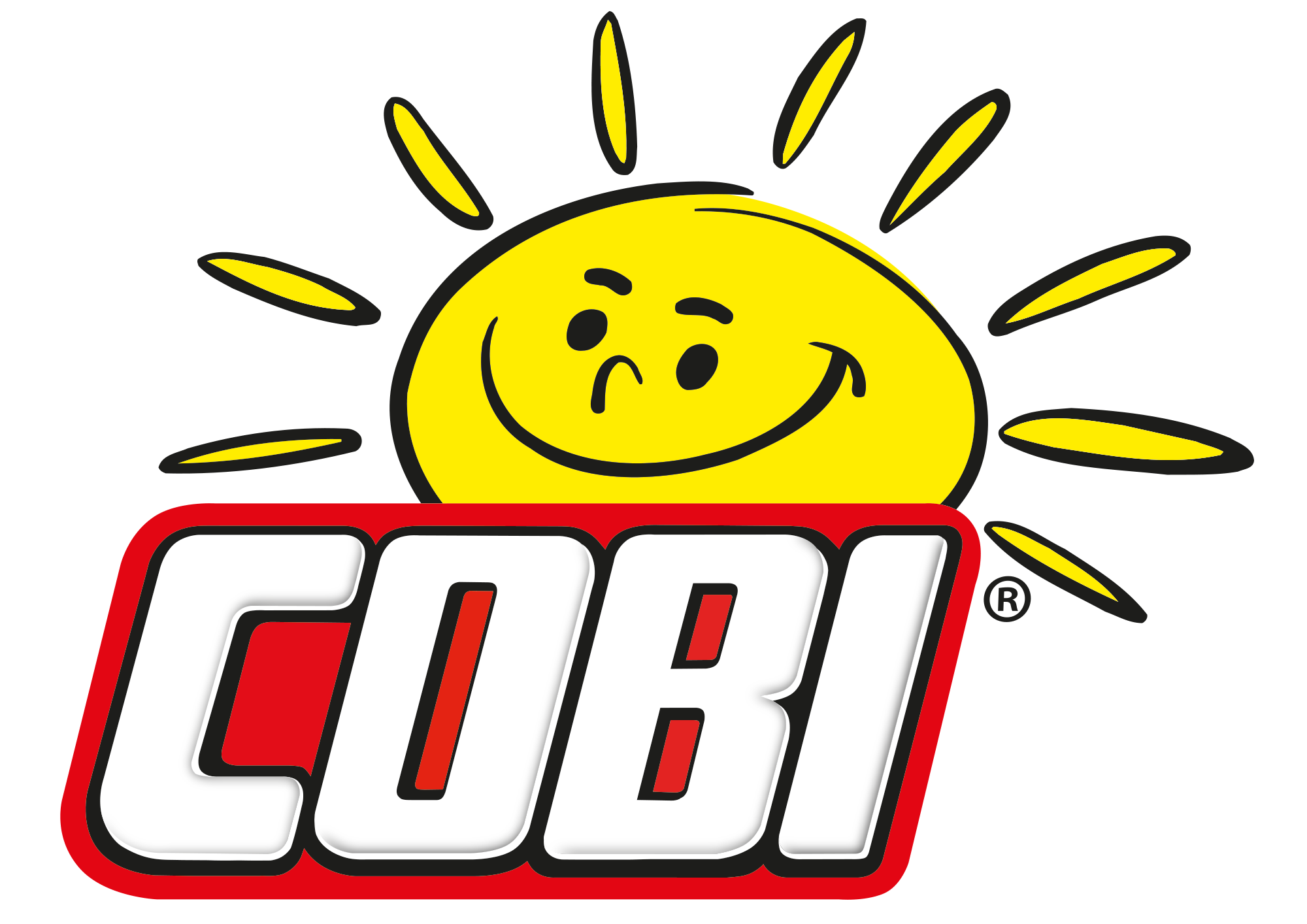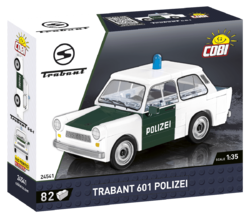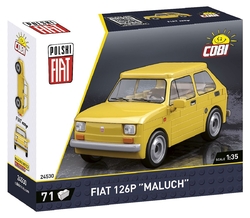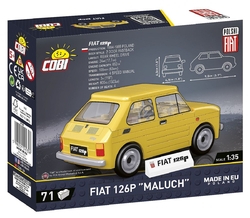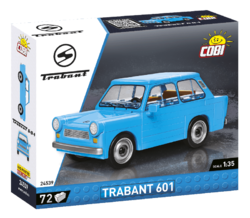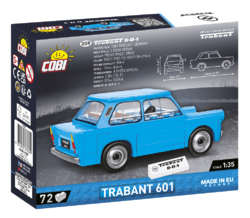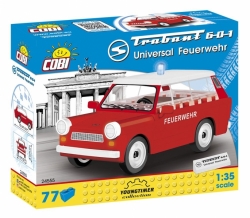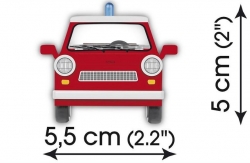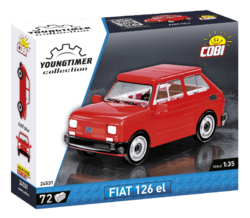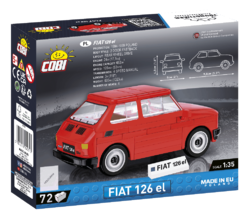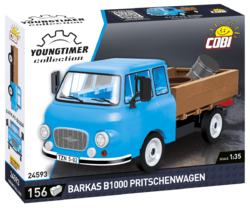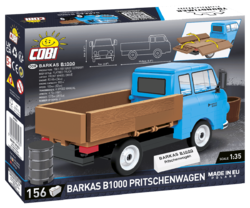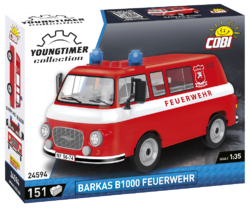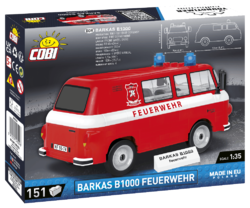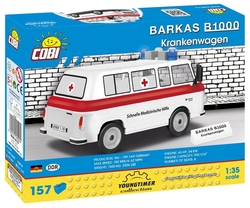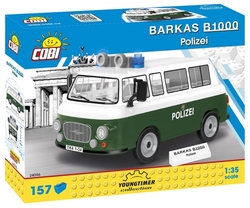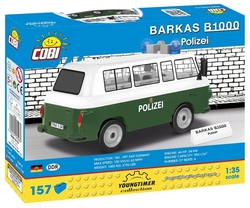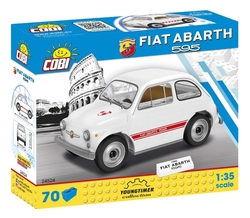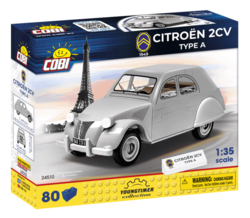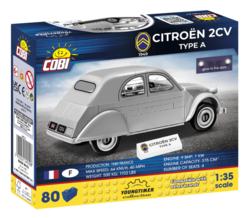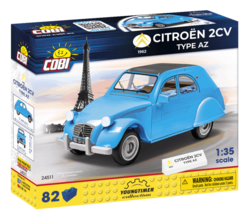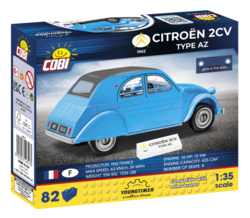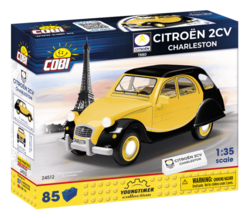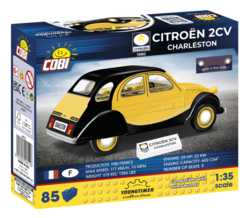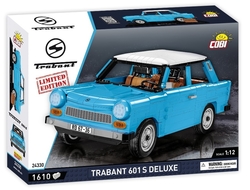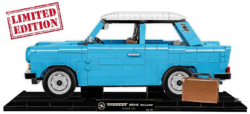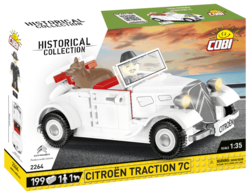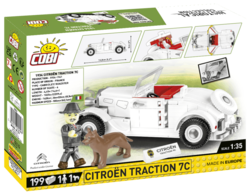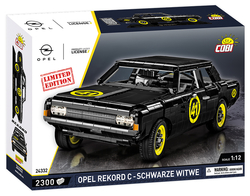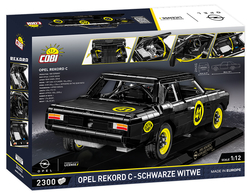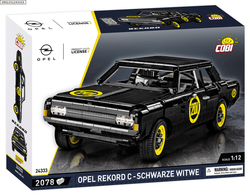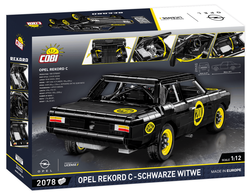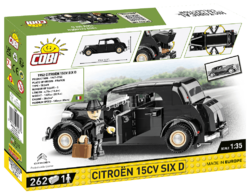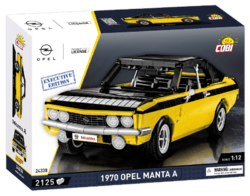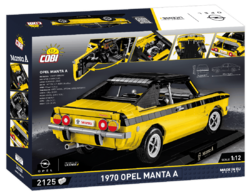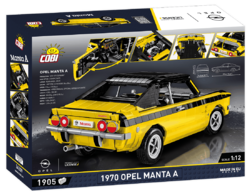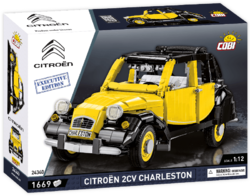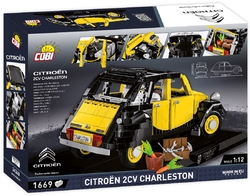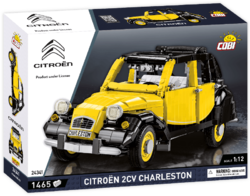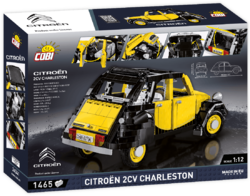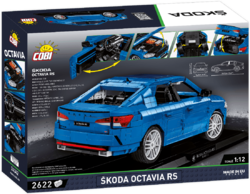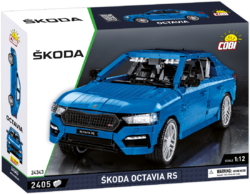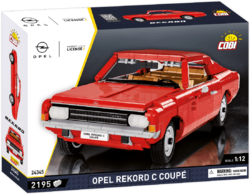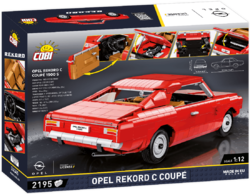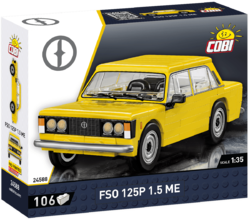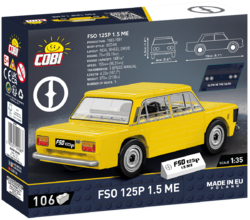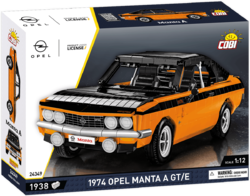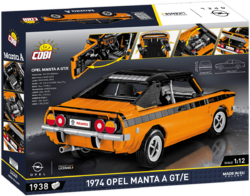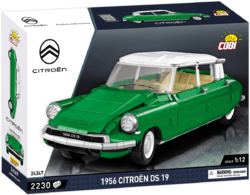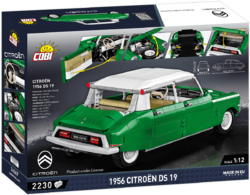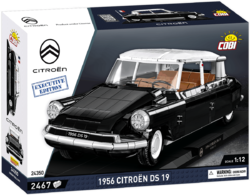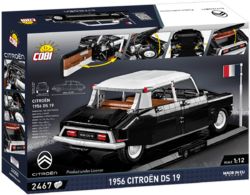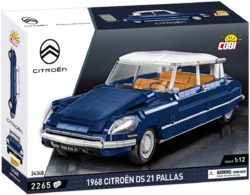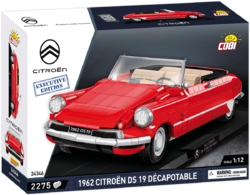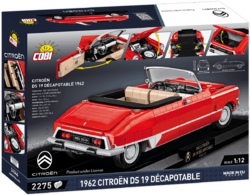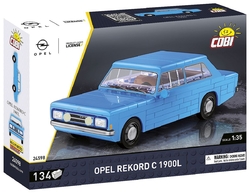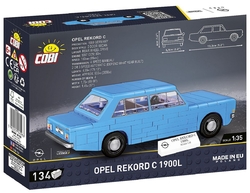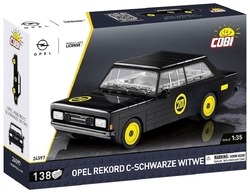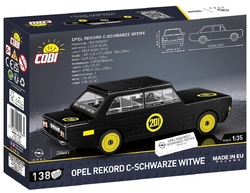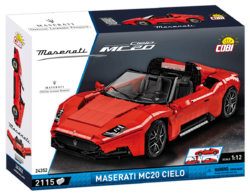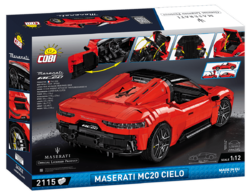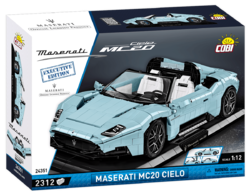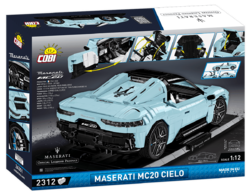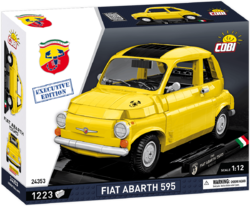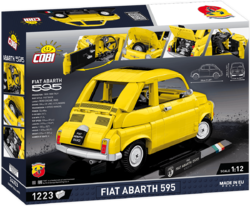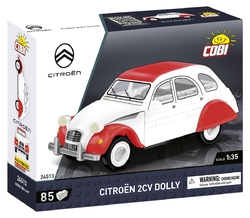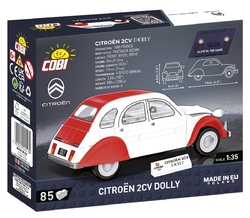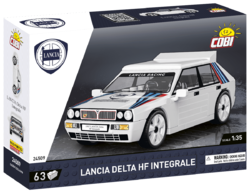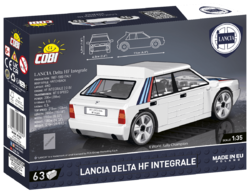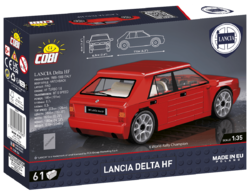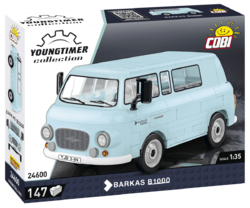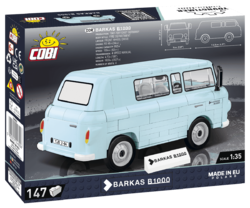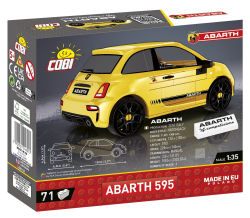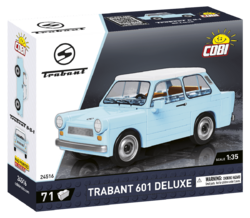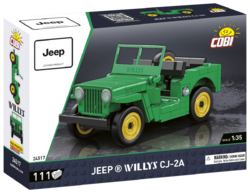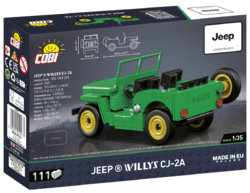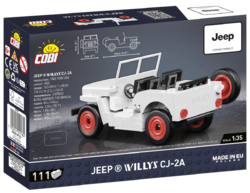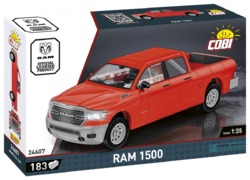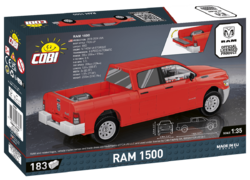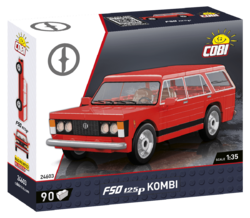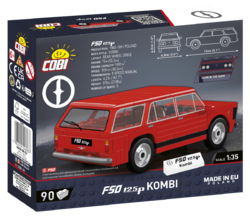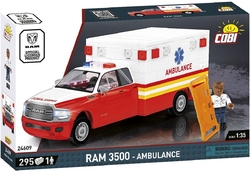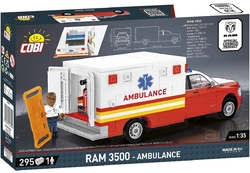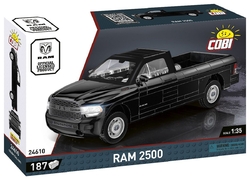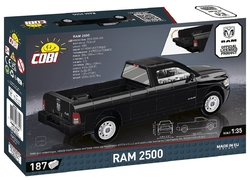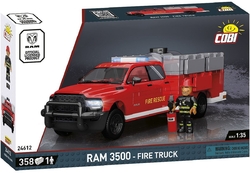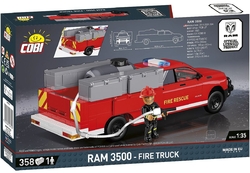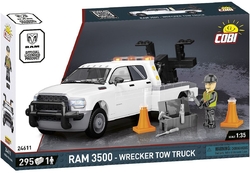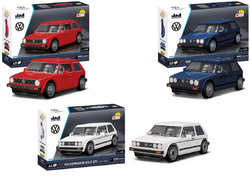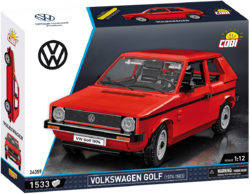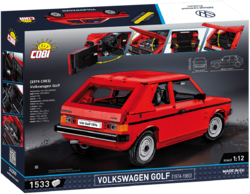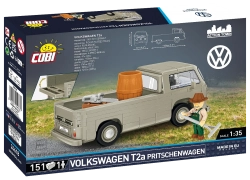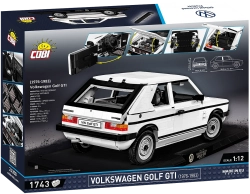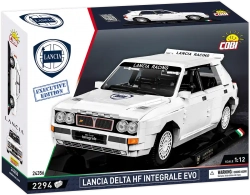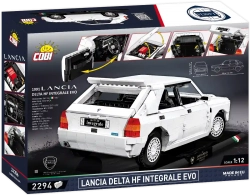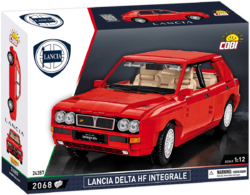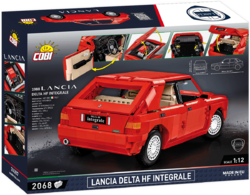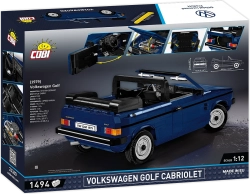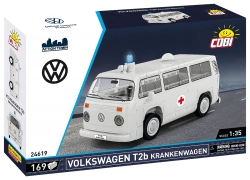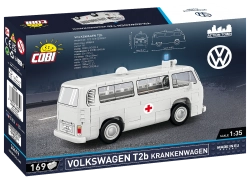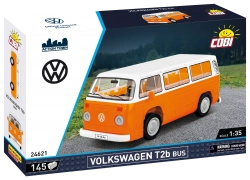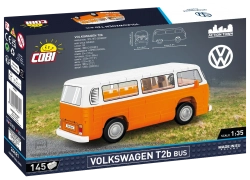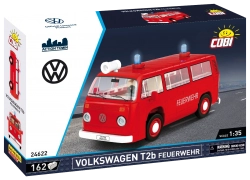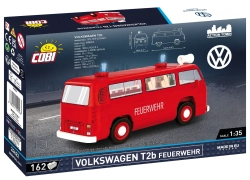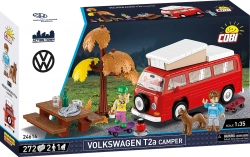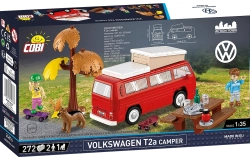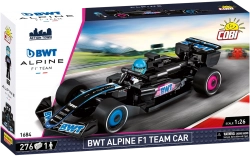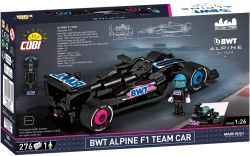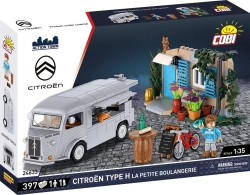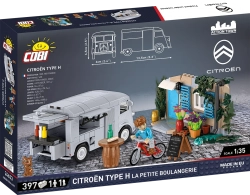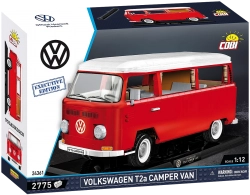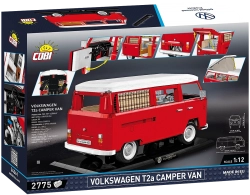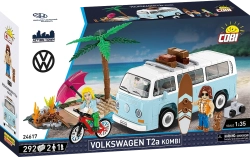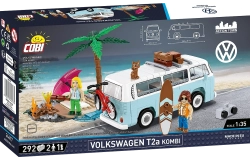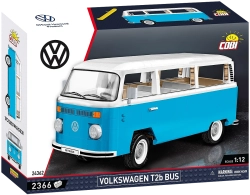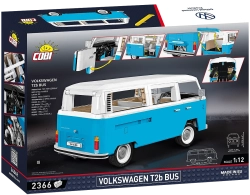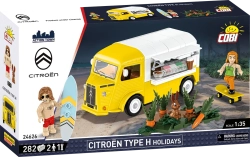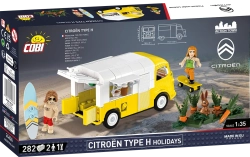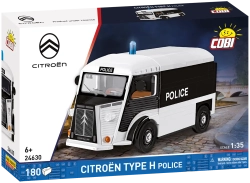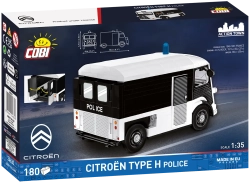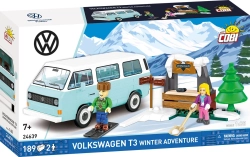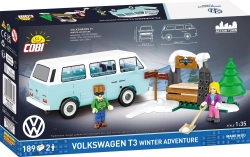A model kit of a German car manufacturer Volkswagen Transporter 2b Bus with a caravan from 1972. The car is made in period blue with a white roof. The package also includes a boat and oars, a swimming ring, a signpost to the popular resort of Bodensee and a figure of a holidaymaker. The kit is made under the official license of Volkswagen AG.
Show more
0 %
(0 Ranking)
| List Number: | COBI-24653 |
| EAN: | 5902251246532 |
| Warranty: | 24 months |
| Manufacturer: | COBI |
| Loyalty Points: | 10 |
| Price excluding VAT: | 687,35 Kč |
Description
Parametres
Files and Links
Discussion
Reviews

Did you know:
- While crazy rusty metal sheets called Barkas raced along East German roads, Volkswagen was preparing the second generation of the legendary Transporter. Its origin, however, must be traced back to the Netherlands.
- The foundation of the legendary Transporter was laid by Dutch Volkswagen dealer Ben Pon, who noticed supply carts on the assembly lines with a front cargo bed and a cabin behind it. In post-war Europe, vehicles of all kinds were scarce, so the enterprising B. Pon began offering these supply carts to his customers. Interest was enormous, but Dutch authorities refused to approve a vehicle in which the driver sat behind the cargo. This did not discourage Ben. He cut out a period leaflet, glued a picture of the cabin in front of the load area onto a blank sheet, and went to Volkswagen.
- VW management assessed and accepted the concept. Thus a legend was born, which is still produced today in its seventh generation.
- Serial production of the T2 began in summer 1967. Volkswagen could not keep up with demand. During the first months after market launch, the manufacturer received tens of thousands of orders. Production capacity had to be increased to 270 units per day. For comparison, the East German Barkas, at full capacity, produced over 30 years as many units as VW did in 1.5 years.
- The vehicle's design was simple and reliable. To the standard van gradually were added a flatbed, Kombi, microbus, Caravelle, ambulance, or the Samba version with a folding canvas roof.
- The Microbus was offered in several interior layouts. Among the most popular was the version with 8 seats + driver.
- In the 1970s, its rounded shape caused quite a stir. Everyone liked the vehicle, but the Transporter became truly iconic in the United States during the peak of the Hippie cultural movement.
- Simply put, people liked the Transporter. The competing Ford Econoline was so ugly that it was nicknamed the "hearse".
- Trips with friends to festivals, nature, or for good “stuff” to Mexico were a daily routine.
- In total, more than 3,000,000 units of the T2 version were produced in various configurations.
- Encountering a second-generation Transporter on the road is not that unusual, but the VW T2 Trailer camper is another story. These trailers were not officially produced but were custom-built either by small companies or DIY by customers.
- The only problem with the car and trailer combination was the 35 kW engine. Driving on flat terrain at 60–70 km/h was no problem. Why rush when the crew was enjoying their well-deserved free time? Problems arose on steeper inclines, where the crew had no choice but to get out and push.
Technical specifications of the Transporter T2b:
- length 4505 mm, width 1720 mm, height 1960 mm
- curb weight 1285 kg
- engine gasoline Boxer 4, 1600 cm³, 35 kW
- gearbox 4 forward + 1 reverse
- fuel tank capacity 45 l
- maximum speed 110 km/h
- fuel consumption 10 l/100 km
- seats 1+8
Technical specifications of the VW T2 Trailer: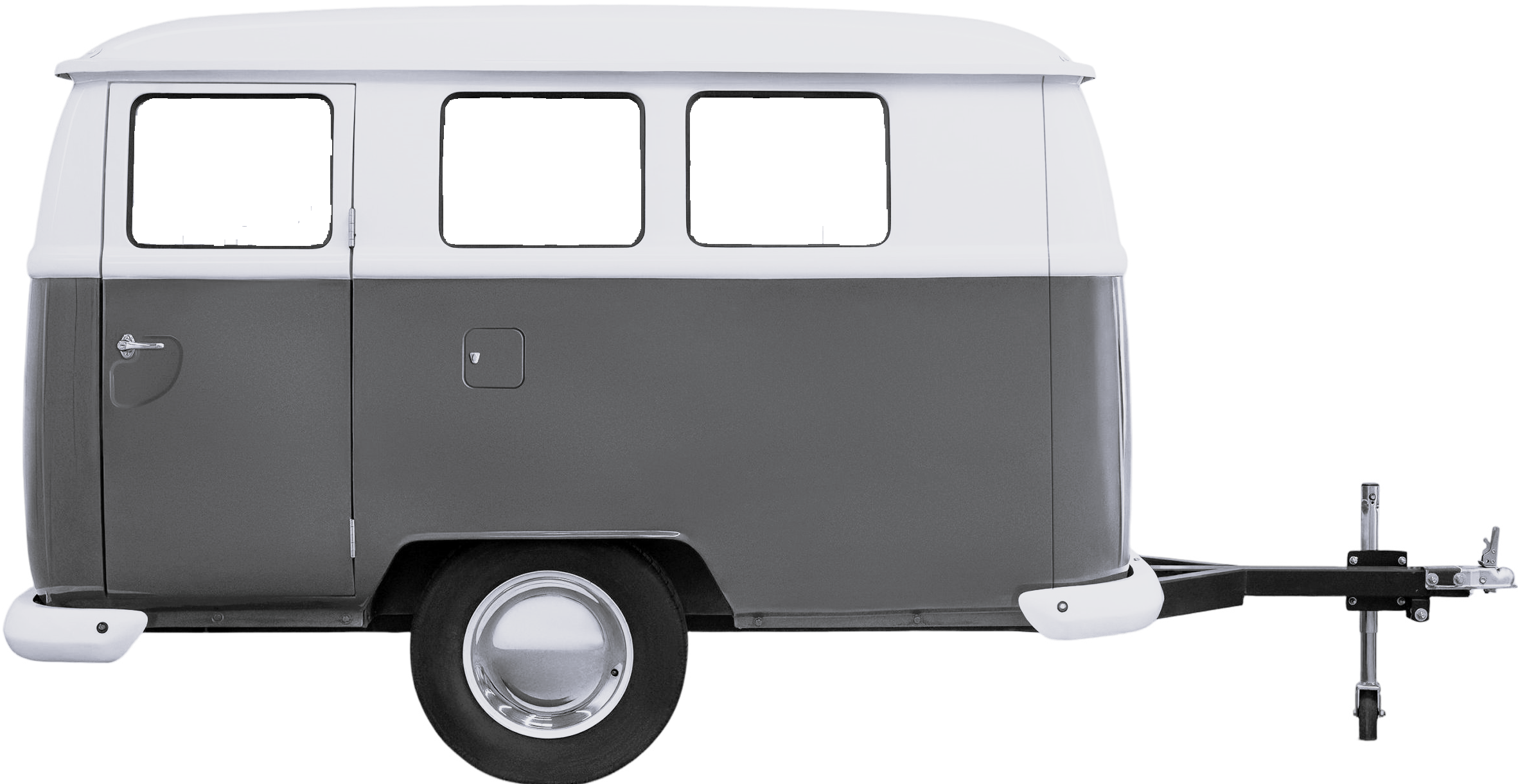
- length 3.5 m, width 1.8 m, height 2.0 m (with roof window)
- curb weight 600 kg
- interior walls: orange, green, or brown laminate
- Rock and roll seat/bed for 2 people
- folding table
- storage cabinet
- optional equipment: kitchenette, 230V socket, gas connection, water heater
Actor T. Gottschalk on camping with VW:
,,Holidaying with a camper trailer was a symbol of free Germany and post-war prosperity. We enjoyed every day. We didn’t care about the weak engine, comfort, or tilt in the curves, and I’m surprised that this still happens today, and that anyone even thinks it’s worth it."
| Version (series) | 07/2025 |
|---|---|
| Number of figurines | 1 pcs |
| Scale | 1:35 |
| Dimensions after assembly | 25,5 x 6 x 6 cm |
| Number of pieces | 322 pcs |
| Box dimensions | 33 x 18 x 6 cm |
| Package weight | 375 g |
| Recommended age | 7+ |
| Contains luminous blocks | No |
| Material | Plastic |
| Collection | Volkswagen |
| Compatible with other brand of kits | Yes |
Discussion is empty.
There is no review for product yet
Other categories
Related Items
Last viewed products
You might be interested










